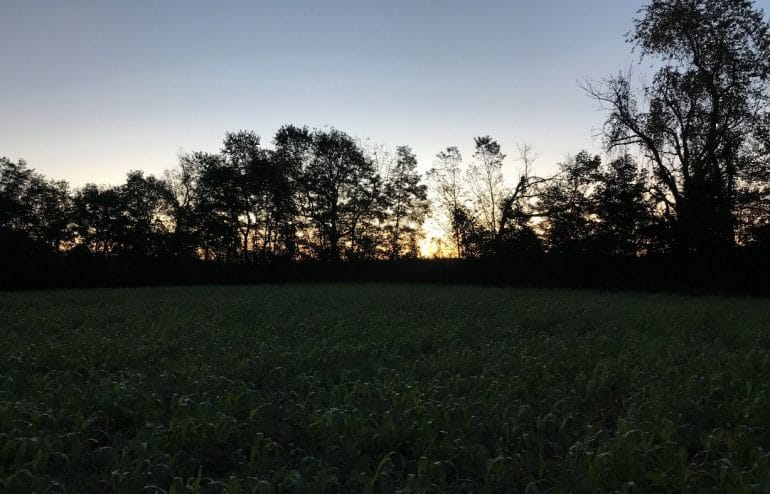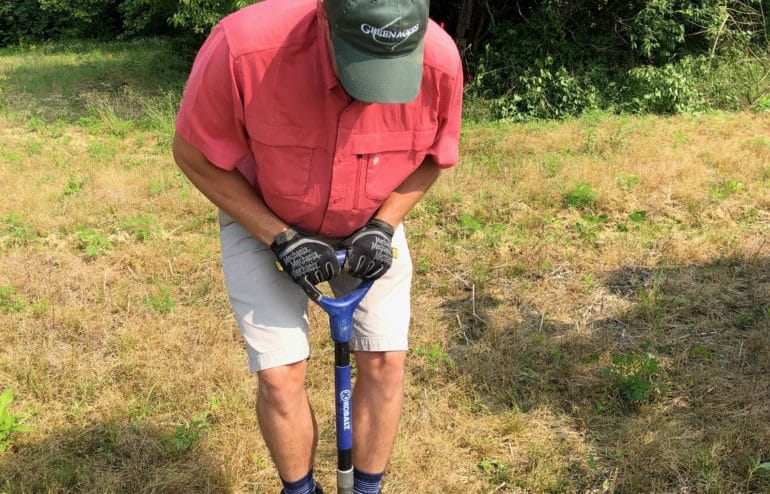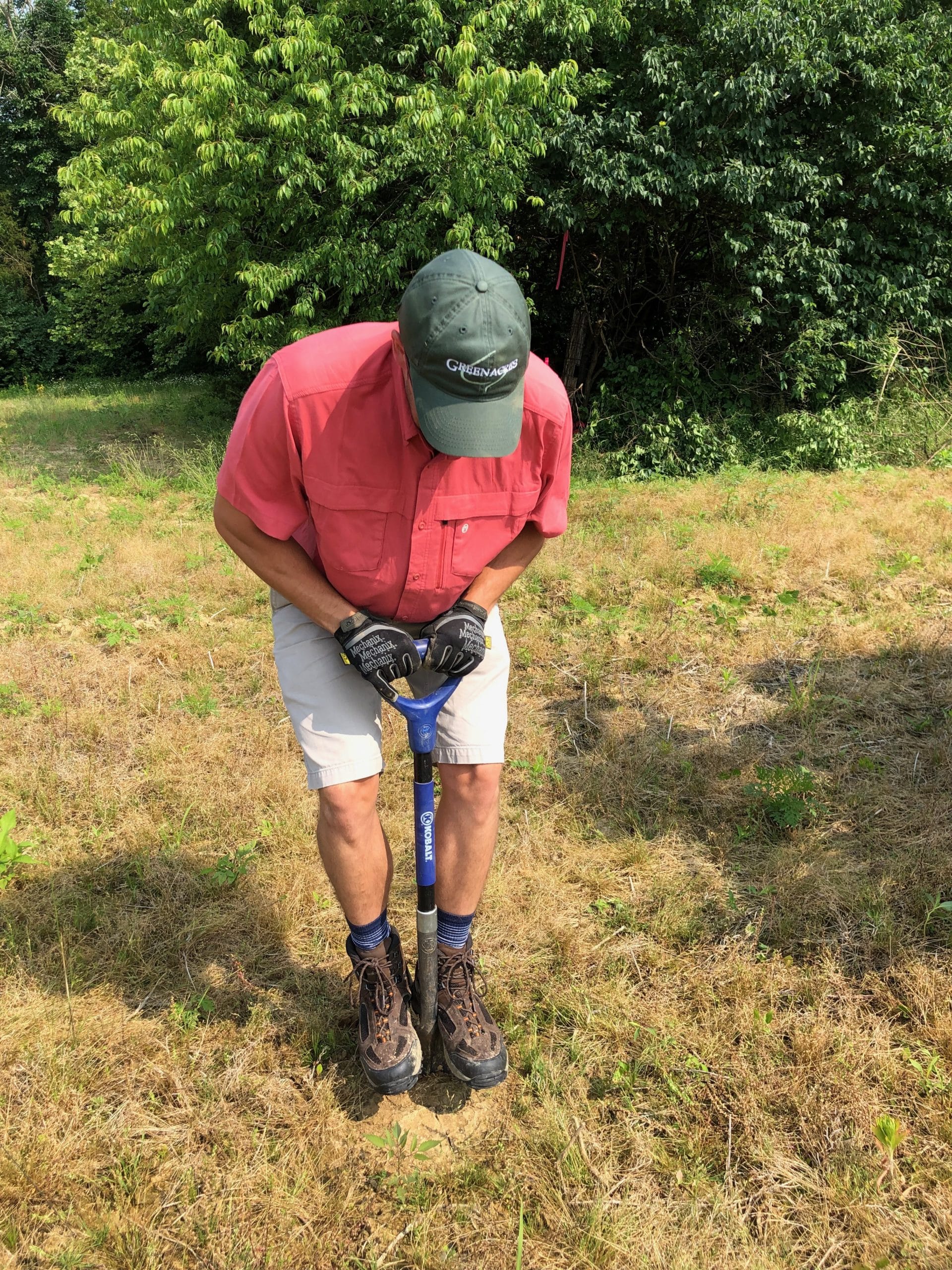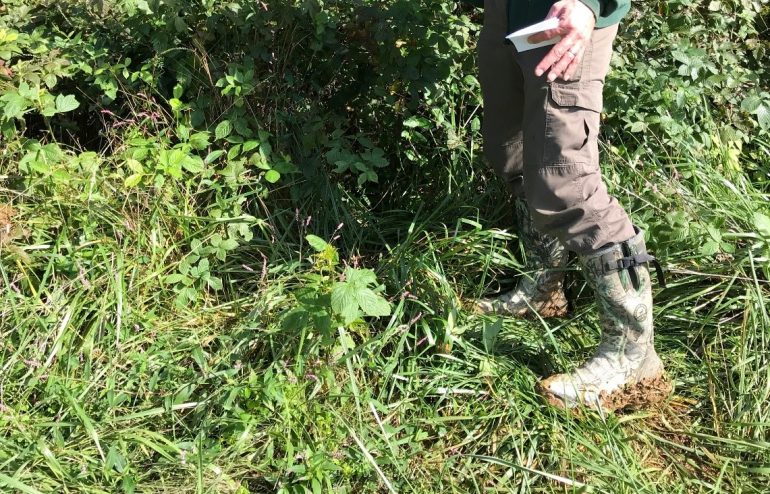Today Jennifer and I got another early start to do some covey call counts and hopefully hear the coveys that our resident bird expert Joe heard a couple of days ago. It was another clear and chilly morning and this time I was a little more prepared by bringing a fold up camp chair. I found out that standing still in the middle of a field in 20 degree weather can be hard on your back! With a head lamp, chair, and a thermos of hot tea, we walked back to the same location where Joe was situated on our previous visit. We still thought it would be a good idea to split up and go on opposite sides of the tree line, hoping we could better locate the direction in which the covey calls were coming from. I kept looking at my cell phone to be prepared for when 7:14am approached so I could be extra focused. 7:14am came and went, then 7:29am. Next thing I know, the sun is up. Maybe Joe didn’t hear them…or maybe it’s just me? When Jennifer and I met back at the tree line where we separated she excitedly said “did you hear them!?” Nope. Well…I guess it is me. Next time we go to Lewis Township I’m sitting right where Jennifer and Joe were located so I can get in on the action too! Good news is, Jennifer was pretty sure it was a covey call so we’re one step closer to confirming we have some quail populations. And once again, as you can see in the picture, it was another beautiful early morning – a great way to start the day.
In addition to testing the soil itself, we collect other types of information. Water infiltration is a measure of how quickly 1 inch of water will enter the soil. Metal rings are driven into the ground, water poured into the ring and the timer begins. Without stable soil aggregates the pores collapse and water will not move into the soil. Stable soil aggregates (produced by biology) maintain the pore structure and water moves into the soil. Our newest property in Lewis Township (Brown County, OH) has historically been used for soybean crops. Many of the areas tested there had standing water in the ring after 30 minutes. In contrast, some of the pastures in Indian Hill had the inch of water move into the soil in less than 2 minutes.
Soil compaction is another measurement we make on our fields. High soil compaction negatively impacts root growth and water infiltration. A penetrometer is the tool we use to measure soil compaction. The tip of the penetrometer is pushed into the ground and the depth at which 300 psi is reached is recorded. At the Lewis Township site that depth averaged between 11.4 to 16.8 inches.






